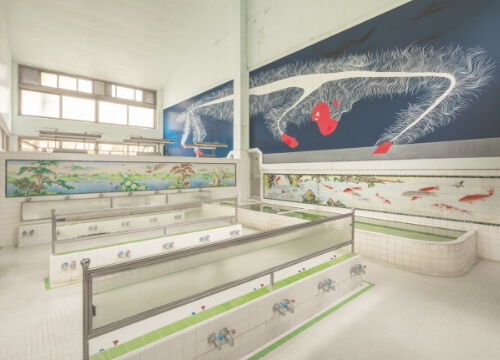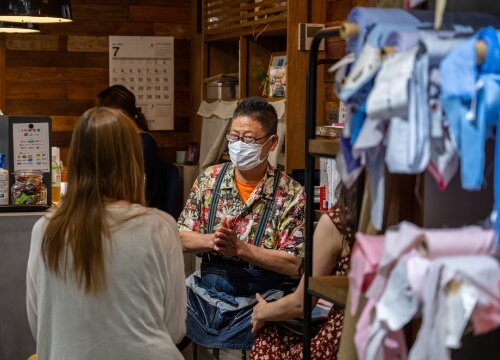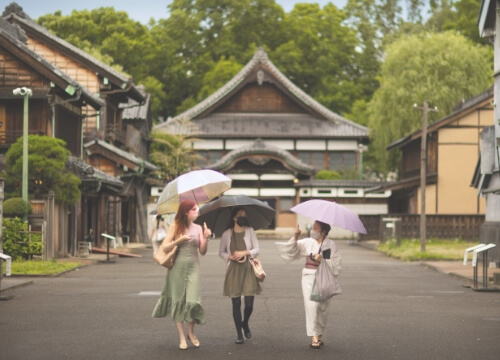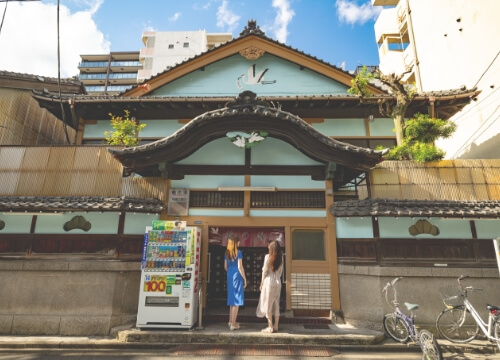
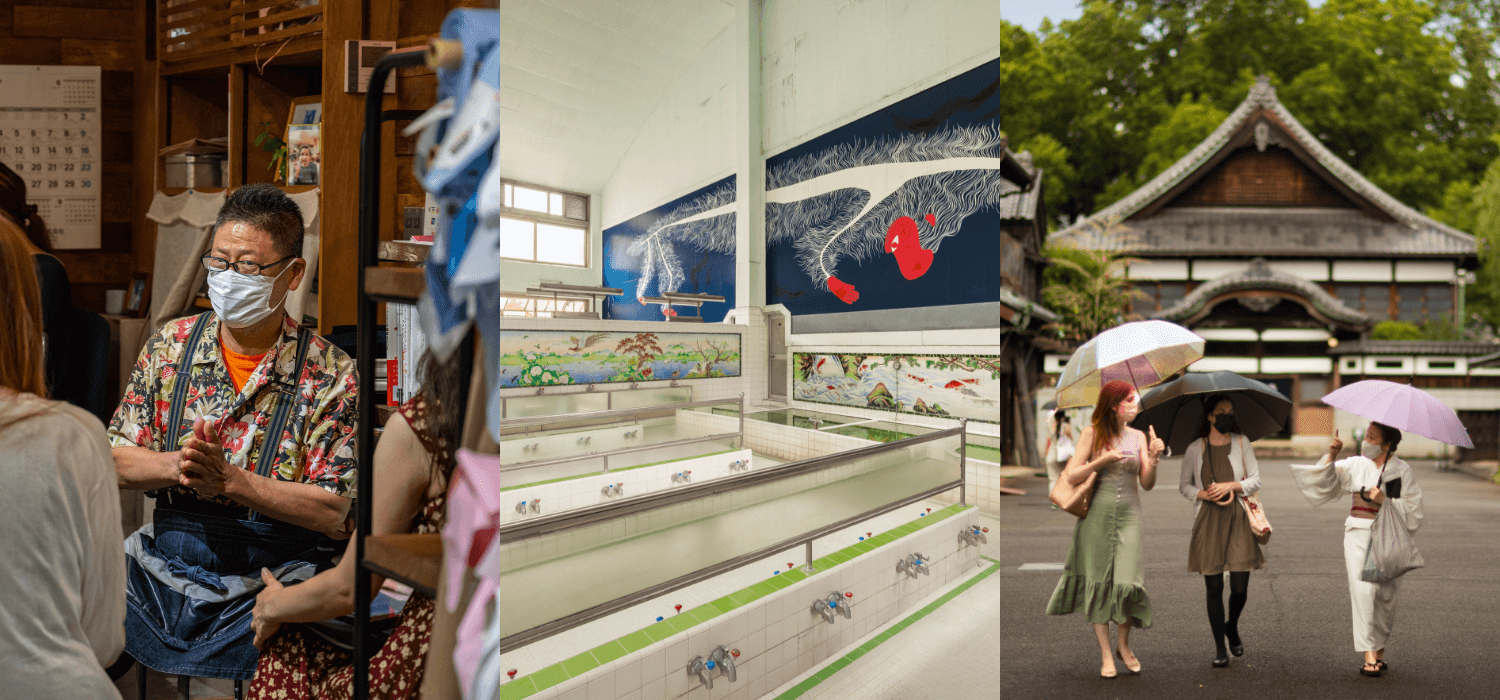
“Just Enough” The Wisdom of Edo
Throughout Tokyo, the past coexists with the present. Centuries old shrines stand beside towering skyscrapers. Not only does the past’s influence physically exist, but its ideals are interwoven into residents’ values and lifestyles. The Edo period, a relatively modern age in Japan’s history, lasted from 1603 to 1868 and is known as an era of internal peace, economic stability, flourishing arts, and isolation from the outside world. Due to restrictions on foreign imports, Japan had to adapt to be self-sufficient and thus, created a society where people by necessity lived more sustainably. While some of these lifestyle changes have fallen out of habit, many still exist in Tokyo today, making it a city where people can not only follow past habits, but learn from them. Follow us through central Tokyo and beyond, and stroll along footsteps of the past.
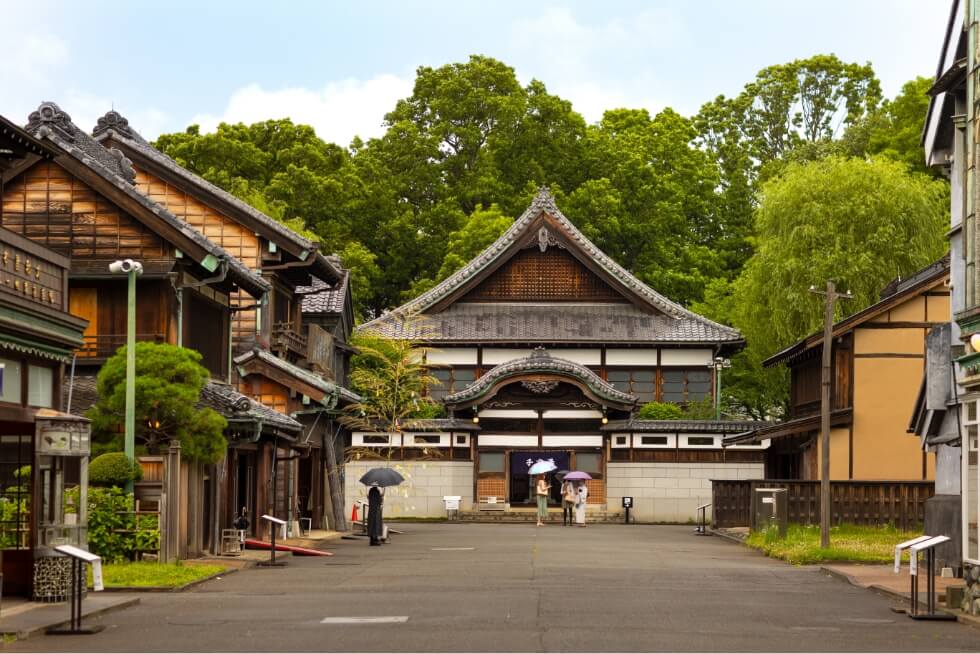
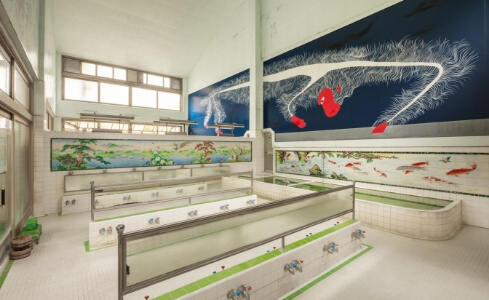
Sento: A Culture
of Sharing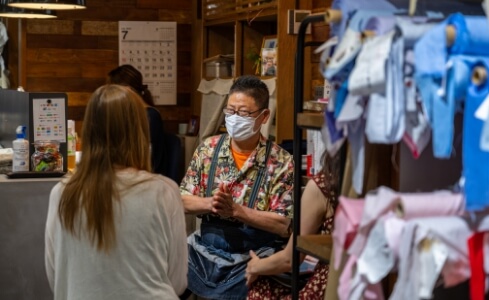
Mottainai Culture
in Nippori Fabric Town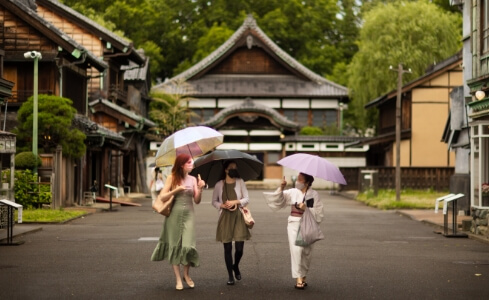
Step into the
Edo Period
in Koganei City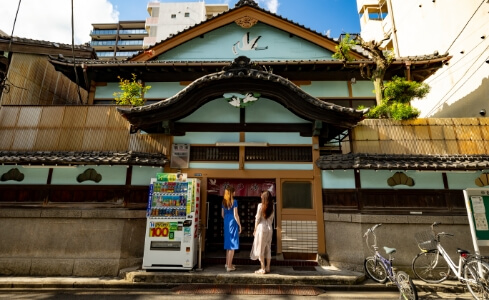
The Edo Period, Today
Sento: A Culture of Sharing

For many, central Tokyo is synonymous with neon lights and futuristic skyscrapers. However, beyond these modernizations stand lantern-lit neighborhoods imbued with stories of the past. Taito City, located near this central area, is renowned for its shitamachi or old town vibes. Iconic sights such as the vermillion Senso-ji Temple and adjoining Nakamise Street have captured tourists’ eyes for generations. Sento, or communal bath houses, are one such example of this preserved history.
Taito has remained relatively unchanged since the Edo period and despite being the smallest of Tokyo’s 23 special wards, is home to nearly 20 sento. These facilities were popularized during the Edo period when using resources efficiently was essential to a sustainable society. In addition to sharing bathwater, sento owners would also burn discarded scrap wood to heat water. Due to limited resources, these facilities became an important part of Edo culture and epitomized environmental sustainability. Even today, sento still integrate these sustainable philosophies into their modern day practices. For instance, in order to conserve energy, many sento use the heat from dirty water to help boil new water.

After the Edo period, sento culture evolved from a necessity to a lifestyle. In our conversations with people of varying ages, they recounted their experiences at sento with nostalgic smiles. Visiting sento with their families was always an exciting adventure. Their parents and grandparents would often buy them sweet drinks and treats. Kouichi Kitajima, the Chairman of the Taito Sento Association, said his favorite part about visiting sento is the feeling of iyashi, which translates to relaxation, relief, and healing. At the end of the workday, the sento provides a haven where people can clean themselves, unwind, and chat with fellow bathers. “It doesn’t matter what your background or social standing is,” Kitajima, a sento owner himself, explained passionately, “Whether you are a manager or a child–everyone is naked and everyone shares the same space.”
Given their cultural significance, sento are perfect places for tourists to experience traditional Japan and support sustainable tourism as their spending fuels both the local economy and sento culture. However, visiting bath houses can be intimidating for foreigners. Each sento has slightly different rules, and the custom of being openly naked in front of others may be uncommon in tourists’ home countries. While you would expect these barriers to prevent tourists from visiting sento, Kitajima responded otherwise. “Most foreigners do their research before they arrive at the sento and follow the rules perfectly,” he said with a chuckle. At Kitajima’s sento, he displays signage in English and Japanese to help visitors enjoy their experience to the fullest. He loves when foreigners visit and is happy to answer any of their questions. “When people bathe together they build a bond with each other and their community,” Kitajima shared. It is his desire to share this sento culture with foreign tourists.

Sustainability and sustainable tourism are built on the concept of maintaining present needs without compromising future ones. “It is important to preserve sento because they are such a unique culture to Japan,” Kunihisa Ehata, the Chief of Tourism Section of Taito, shared, “They are all about connections and a sense of community.” In order to preserve sento for future generations, Taito is implementing numerous initiatives to connect tourists and younger people with sento. Aside from using social media platforms such as Instagram and Twitter, Taito also created a photography tour where people can take photos of sento before open hours–a rare opportunity in Japan. In collaboration with the Taito Sento Association, Taito also supports a stamp campaign where people can receive prizes, such as t-shirts and towels, by visiting multiple sento. This project introduces people to the subtle differences between bath houses and makes them appreciate them more.
In a constantly changing city like Tokyo, Taito’s sento and shitamachi atmosphere reminds people of the enduring culture of the past.

Sento: A Culture
of Sharing
Mottainai Culture
in Nippori Fabric Town
Step into the
Edo Period
in Koganei City
The Edo Period, Today

